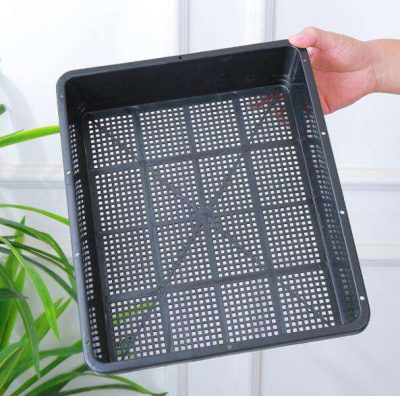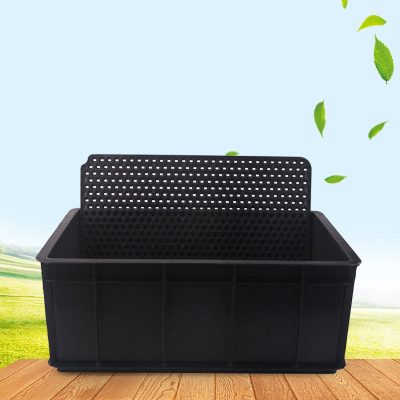To maximize plant health and growth using plant trays, here are some techniques you can implement:
- Proper Drainage: Ensure that your plant trays have adequate drainage holes or bottom trays to allow excess water to drain away. Proper drainage helps prevent waterlogging, which can lead to root rot and other plant health issues. Avoid letting the plant trays sit in standing water.
- Watering Techniques: Water your plants in the plant trays properly to maintain optimal moisture levels. Water from the bottom by adding water to the bottom tray or by using a capillary mat. This encourages the plants to develop deep root systems as they grow towards the water source. Avoid overwatering, as it can lead to root rot. Monitor the moisture level by feeling the soil or using a moisture meter.
- Fertilizer Application: Regularly feed your plants with appropriate fertilizers to provide essential nutrients for healthy growth. Follow the recommended dosage and frequency for the specific plants you are growing. With plant trays, you may need to adjust the fertilization schedule since the plants are growing in a confined space with limited soil volume.
- Air Circulation: Good air circulation is essential for plant health. Place the plant trays in an area with adequate air movement, which helps prevent the buildup of moisture and reduces the risk of fungal diseases. If needed, use fans or open windows to improve air circulation around the plants.
- Light Exposure: Place your plant trays in a location that provides sufficient light for the specific plants you are growing. Most plants require adequate sunlight or artificial grow lights for optimal growth. Monitor the light levels and adjust the tray’s position or use supplemental lighting if necessary.
- Transplanting: As the plants grow, they may outgrow the individual cells in the plant tray. It’s important to transplant them into larger pots or containers at the right time to prevent root congestion and promote continued growth. Follow proper transplanting techniques to minimize transplant shock.
- Monitor and Address Pests and Diseases: Regularly inspect your plants for signs of pests or diseases. In plant trays, pests and diseases can spread quickly due to the close proximity of plants. Take prompt action to address any issues, such as using organic pest control methods or appropriate fungicides.
- Rotate Plants: If you are using plant trays for extended periods, consider rotating the plants to prevent uneven growth and to ensure all plants receive adequate light and air circulation. This also helps reduce the risk of diseases or nutrient imbalances caused by repeated plantings in the same tray.
- Cleanliness and Sanitation: Regularly clean and sanitize your plant trays to prevent the buildup of pathogens or diseases. Wash the trays with warm soapy water, rinse thoroughly, and disinfect them with a diluted bleach solution or a natural disinfectant. This helps maintain a healthy growing environment for your plants.
By implementing these techniques, you can maximize plant health and growth in your plant trays, leading to successful gardening outcomes.








